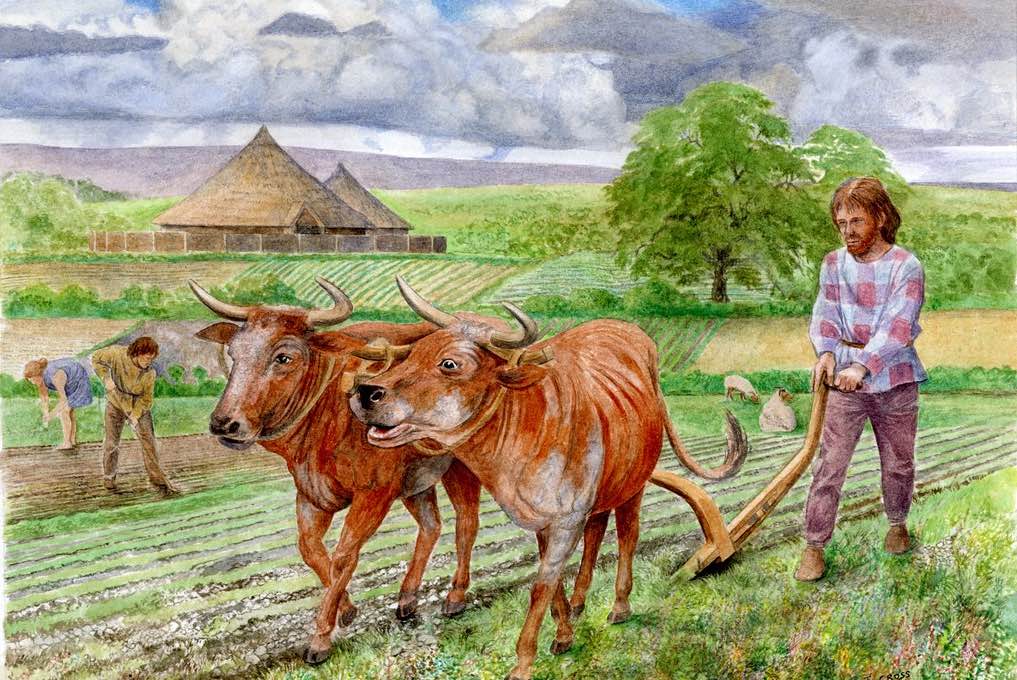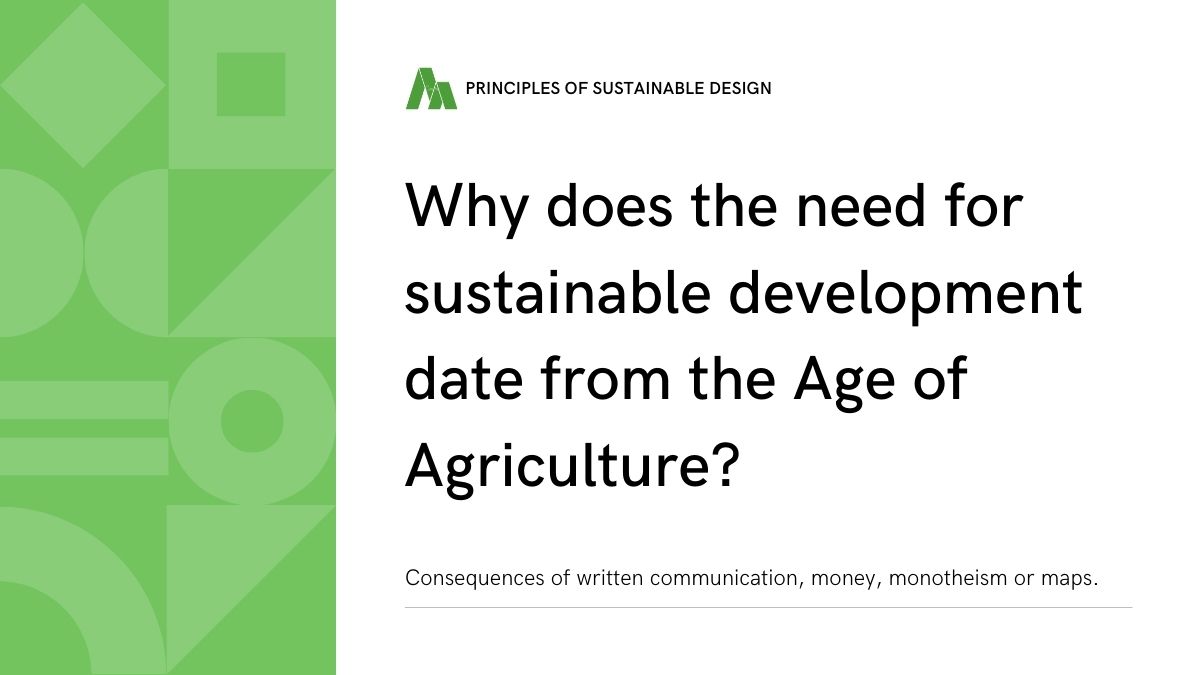Introduction
Maybe the need for sustainable development is not a new thing. Why during the Age of Agriculture, the human who was only one animal amough others, distanced himself from nature?
What are the inventions or discoveries that allowed humans to no longer see themselves as part of nature?
While the ebbs and flows of nature via the passage of the sun and moon, yearly flooding patterns, and the coming and going of the seasons served as consistent connections to nature, the Age of Agriculture marked the beginning of a new relationship between humankind and the natural world.
Abstract thinking began to lead humans to a subject/object conception of nature which later comes to be seen as less divine and more as a resource.
Agriculture has allowed humans to have more energy than when they were hunters and gatherers. But it was more than just “excess energy” contained within the food that changed society. Increased food security meant less day-to-day worry about meals, which would allow humans to have the most precious element – surplus time. Now, the freedom to pursue non-survival activities led to more invention, new metaphysical explanations of nature, new class structures, more expressions of culture, and a new conception of the cosmos.

The written communication
While the advent of spoken language constituted a great leap in the development of the subjective/objective view of the world, writing takes that power to new heights. Now an element in the natural world, like a certain kind of tree for example, is understood through a series of written symbols which refer to specific sounds, which, when combined, trigger a synapse in the brain that signals a recognition of that certain kind of tree. The number of lateral thought processes, and the capacity of the human brain to think abstractly is now greatly heightened. It could be argued that this helps to pave the way for a perception of nature as something separate from the observer.
The money
Plants and animals, once considered sacred within an animistic world view, could now be viewed as resources or as commodities to be bought and sold and also leveraged to gain access to other commodities. Animals were then used without thinking of a sustainable development of the most wanted species.
The monotheism
What is the link between the lack of sustainable development and religions? With monotheism, the separation between divinity and the natural world becomes complete. The all-powerful God now has dominion over all the forces of nature. While this greatly simplifies the narrative arc of a given society, it also is reductionist in its view of nature in that it removes the great diversity of gods associated with natural forces and replaces it with a more direct and simple model of deity.
The maps
With the advent of map making, the Earth itself (the landscape) could now be understood through abstract two-dimensional images that were used to define land ownership. This serves to more deeply sever the ties between humans and the natural world because now the land itself could be understood as having monetary value as a property. The land can now be owned. The sustainable development was then totally forgotten.
Conclusion
By becoming smarter and smarter, by socializing, humankind has learned to use its environment as a resource. Thus humans who before the Age of Agriculture were part of nature have become an external user of this nature. To preserve our future and that of our children we must once again be part of nature. The only way to sustainable development.
Learn more about sustainable design
To go further on this topic, we offer a course dedicated to the principles of sustainable design. This course explores the context, motivations, frameworks and perspectives necessary to build a deeper understanding of sustainability and to form a solid foundation for sustainable design. This article is based on the first lecture of this course. The professor, Rob Fleming is a registered architect with over 18 years’ experience of teaching, research and practice in sustainable design at Jefferson University and University of Pennsylvania.

